The New York Rangers’ signing of Igor Shesterkin to a four-year, $22.6 million extension Aug. 9 was exciting for the fan base, a reasonable contract that locked up Henrik Lundqvist’s heir apparent in goal for the near future and created a sense of certainty in net as the Blueshirts ostensibly move from rebuilding to playoff contention.
At the same time, the Rangers may be shopping Alexandar Georgiev, who looked to have a chance to be Lundqvist’s successor before that role was usurped by his fellow 25-year-old teammate over the past two seasons. Yet the club might want to be judicious in any potential desire to move Georgiev, who struggled at times in 2020-21 but has shown flashes of ability to be more than a backup in his 96 NHL games over four seasons.
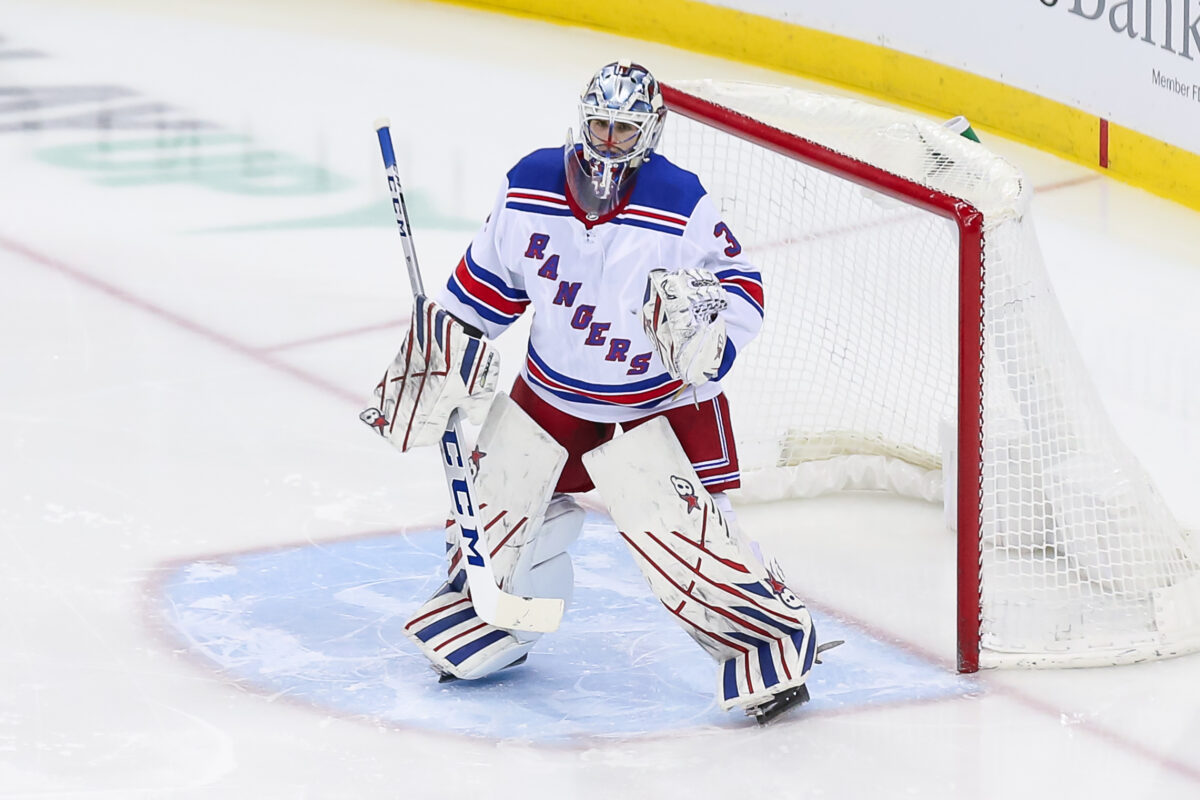
That’s because a closer look at the Rangers’ system reveals some concerns about depth in goal behind Shesterkin, Georgiev and veteran backup Keith Kinkaid – which could be exposed should a red flag that’s surfaced in Shesterkin’s brief but promising NHL career continue to do so.
So let’s take that look at the goalies available to the Rangers, now and for the future.
Igor Shesterkin
Shesterkin’s extension marks the biggest average annual value given to a goalie on a second contract in league history, his $5.667 million per year eclipsing Sergei Bobrovsky’s $5.625 million per for two years with the Columbus Blue Jackets in 2013. Though general manager Chris Drury had only 47 games of NHL experience to go off of when he decided to give Shesterkin the record AAV, the contract should be a good one overall for the Rangers.
Shesterkin has shown his three seasons of utterly dominating the Kontinental Hockey League to be no fluke, posting a 26-16-3 record with a 2.59 goals-against average and two shutouts for the Blueshirts. The Rangers love his focus and even-keeled approach, which he pairs with excellent anticipation in the net, the ability to deaden the puck on saves so as to avoid big rebounds and outstanding puck-handling – one of the few skills Lundqvist, his eventual Hall of Fame predecessor, didn’t possess.
The Rangers are riding with Shesterkin – if, of course, the 25-year-old can stay in the saddle. Injuries have reared their ugly head several times in his short stint on Broadway, and it’s worth noting that Shesterkin has never played more than 39 games in any season (with St. Petersburg of the KHL in 2016-17). He suffered a groin strain in March that sidelined him for three weeks, though he remained healthy for the rest of the season after returning.
Alexandar Georgiev
How Shesterkin adjusts to a substantially increased workload will be critical in avoiding recurring injury problems. That’s why the Rangers need to be sure they want to move out Georgiev, if that is in fact something they’re considering. The native of Bulgaria has a cap hit of $2.425 million next season, a bit high for a No. 2 goalie, and will be a restricted free agent with arbitration rights due for a raise next summer. There are also rumblings that Georgiev would like an opportunity to compete for the No. 1 role elsewhere, though that was recently denied by his agent, Mike Liut.
“I think we’ve got two really good young goaltenders. Everything (goaltending coach) Benoit Allaire told me is that we’ve got top young goaltending, and they can take another step,” new coach Gerard Gallant said last month. “Benoit Allaire has been there a long time, he knows the goalies better than I do, so I’ll lean on him for that.”
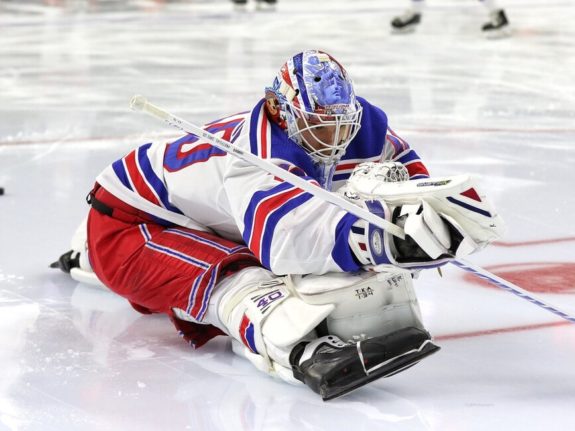
Although Georgiev has been surpassed by Shesterkin, his numbers can’t be ignored either. The undrafted free agent is 43-38-9 with a 2.95 GAA and six shutouts in his NHL career, posting an 8-7-2 record with a 2.71 mark and two shutouts in 19 games last season. Should Shesterkin get hurt again next season, Georgiev has the track record to suggest that with more regular work, he would provide Gallant with solid play in net, for an extended time if necessary.
Another reason to consider keeping Georgiev around – he’s 7-3-0 with a 1.84 GAA and two shutouts against the archrival New York Islanders.
Keith Kinkaid
So why would Drury even think about dealing Georgiev? Because he’s got a solid veteran backup option in Keith Kinkaid. The 32-year-old was signed to a two-year contract last offseason to provide organizational depth and fulfill expansion draft requirements this summer, but Kinkaid also evoked confidence in his abilities in 2020-21, going 3-2-1 with a 2.59 GAA with one shutout in nine games (seven starts).
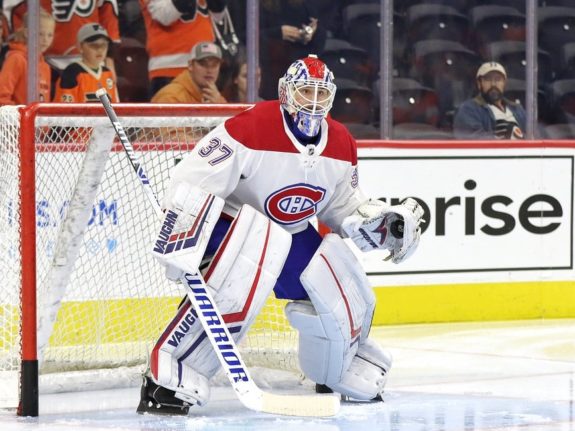
Kinkaid, with a cap hit of just $825,000 next season, has a career record of 68-58-21 with a 2.93 GAA and eight shutouts in eight seasons, six of them with the New Jersey Devils. If Shesterkin can put the injury bug that has marked his early career behind him, Kinkaid’s competence and experience could make Georgiev easier to trade.
Adam Huska/Tyler Wall
The Rangers took a couple of fliers on Adam Huska and Tyler Wall in the late rounds of their respective drafts, with Huska being selected in the seventh round in 2015 and Wall going in the sixth round the next year. Huska has played three seasons and has done enough to turn himself into a potential depth option for the Blueshirts, playing 50 games over parts of three seasons with the Hartford Wolf Pack of the American Hockey League. The 24-year-old, who went 9-4-0 with a 2.70 for the Pack in 2020-21, was signed to a one-year, two-way contract earlier this month and could be a recall to the Rangers if Georgiev is traded and Shesterkin or Kinkaid suffers an injury.
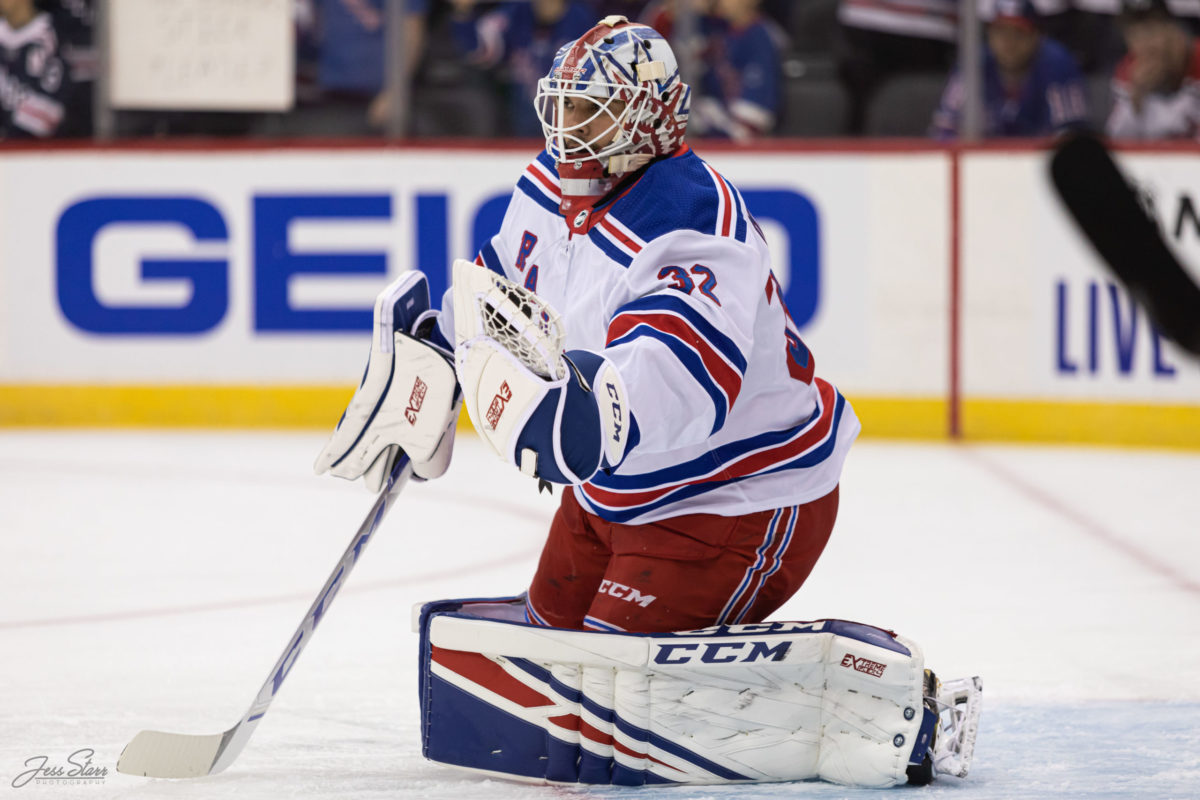
It’s too soon to tell with Wall, who chose to play for UMass-Lowell after being drafted by the Blueshirts five years ago and completed an outstanding college career last year. He joined the Wolf Pack for the 2020-21 season and went 3-4-1 with a 3.58 GAA in 10 games. A larger body of work is needed to determine what the organization has in the 23-year-old Wall, who’s going into the final season of his entry-level contract.
Dylan Garand
Some evaluators felt the Rangers got a steal by drafting Garand in the fourth round, 103rd overall, last year. The 19-year-old put together a stellar four-year career with the Kamloops Blazers of the Western Hockey League. Though he has yet to sign an ELC, Garand did play two games with the Wolf Pack last season, going 0-1 with a 3.68 GAA.
Garand is years away from the NHL, but his development could end up being important to the Rangers down the road, either playing at Madison Square Garden or as trade capital.
Rangers’ Organizational Goaltending Not as Deep as it Might Seem
Shesterkin is locked in contractually as the No. 1, and he’s done nothing so far to detract from his reputation as a star-in-waiting. Georgiev is the current No. 2, another young goalie who if not a star, has shown himself to be a more-than-viable option. Kinkaid, the No. 3, brings experience and showed that he still has it in 2020-21.
Yet that supposed wealth in net could easily prove to be a mirage. Shesterkin has to show he can consistently handle the rigors of playing 50-60 games a season in the NHL. Georgiev, if he isn’t traded, needs to demonstrate that his bouts of inconsistency last season were a result of sporadic minutes, not an emerging career trend. And would Kinkaid’s limits at this point in his career be exposed should the Rangers be forced to rely on him for an extended period?
Huska and Wall are unproven talents, and too much uncertainty around them exists to be considered locks to contribute at the NHL level. Garand is an interesting prospect but no more than that at this point, and realistically won’t play for the Rangers for years. The club also drafted Olof Lindbom in the second round in 2018, but he has yet to impress while playing in Sweden.
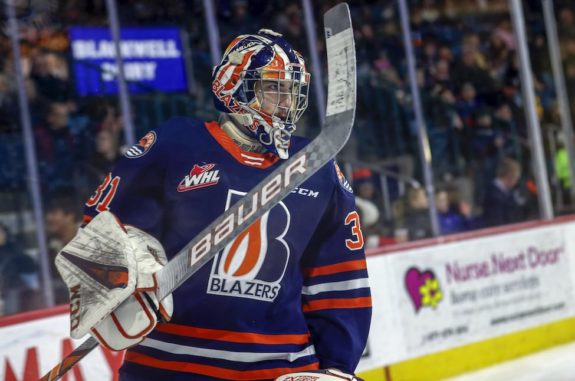
All of that is why the Rangers should be cautiously encouraged by the personnel they’ve compiled in goal – but not ecstatic at any notion of having a perceived embarrassment of riches there. Adding a veteran castoff in the Kinkaid mold for more security at the position wouldn’t hurt. Neither would targeting another goaltending prospect in the 2022 draft.
Most immediately, Drury needs to proceed carefully if he decides Georgiev is expendable, because the four-year veteran could easily prove in short order not to be. Including Georgiev as part of a trade that addresses a Rangers need is one thing; moving him out simply to alleviate a perceived logjam at the position could be dangerous. If Georgiev is dealt, the first-year GM’s team is one more Shesterkin injury away from wishing they had a young goalie with upside – just like the one Drury would have sent packing.